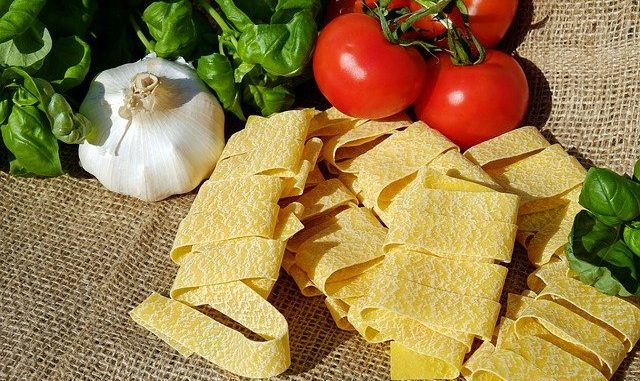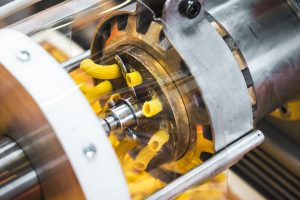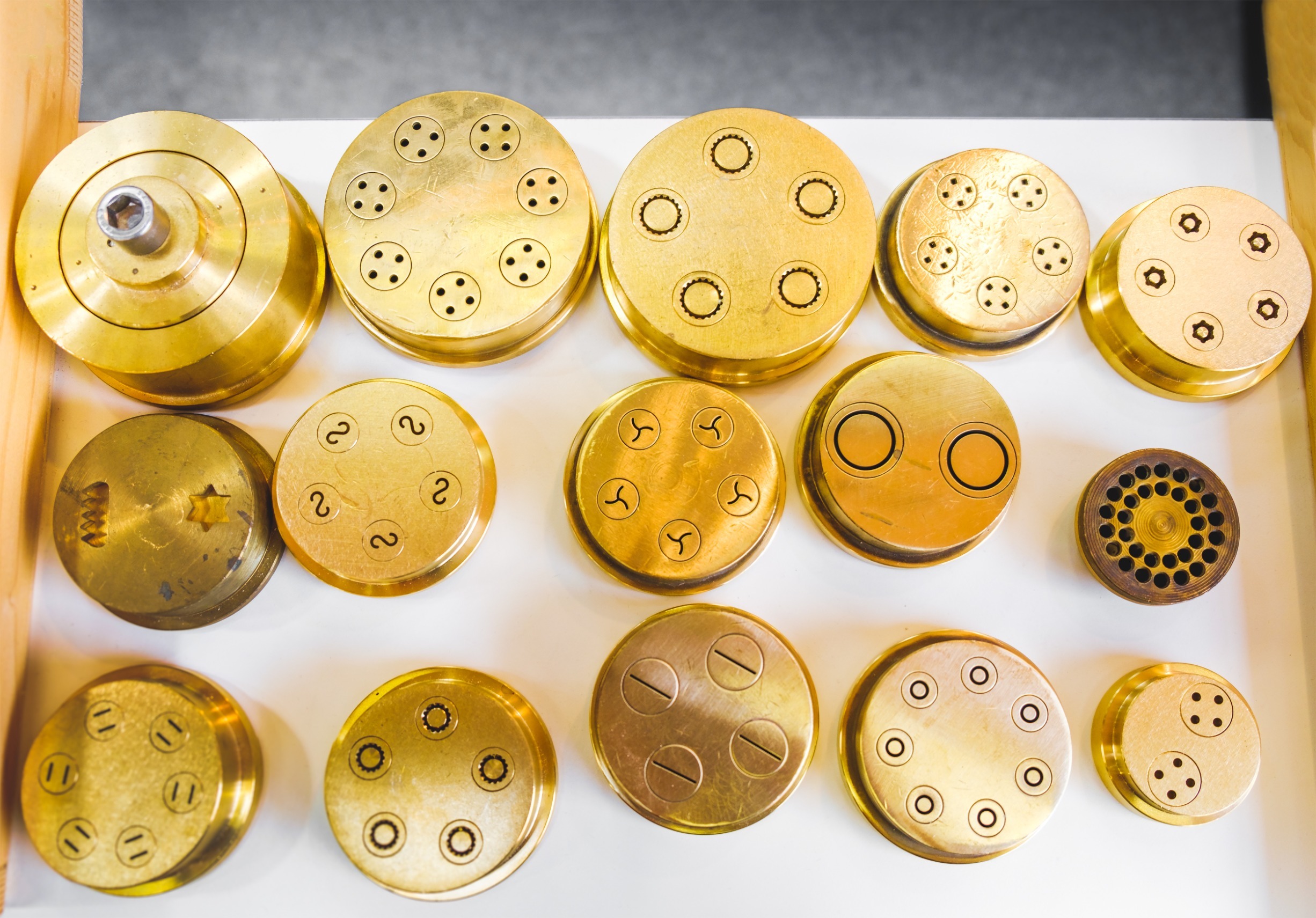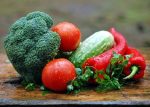
Pasta is an important cereal-based food that has global appeal. It is cheap to make and generally not expensive to buy having been a staple of the shopping trolley for decades. It has excellent sensory properties which make it ideal as a carrier for a wide variety of sauces. It can be boiled and baked. As a dry food it has excellent storage properties too but also retains its texture in ready-to-eat meals. Nutritionally, it is also an excellent source of complex carbohydrate in the form of resistant starch and complexed protein (Seibel, 1996). It’s also extremely low in fat which means it can be used in calorie-controlled diets. One of the key impacts on its success as a food is how pasta is manufactured so easily and cheaply.
Virtually all pasta is made using semolina from the durum wheat plant (Triticum durum). This semolina has excellent rheological properties and cooks better than other wheat sources. It is also superior because of its taste and higher consumer acceptance. Starch and the protein gluten are at the heart of the product and a full understanding of the science, especially the chemistry of these materials is critical to fully appreciating how pasta is manufactured.
The Manufacture Of Pasta
In the home, pasta like noodles are made in batches. In a continuous manufacturing process, a number of operations are brought together. The largest as of 2023 is Barilla (Parma, Italy) which produces around 1,400 Tons of pasta every day. That amounts to 320,000 Tonnes of pasta on an annual basis. According to the marketing brochure they produce a mixture of long- and short-cut pasta. Long cut is spaghetti and tagliatelle whilst short-cut includes penne and fusilli for example. Each line produces about 10K lbs. of pasta per hour into 230 boxes/hour. Spaghetti is still the most popular pasta in the world and rivals noodles which are manufactured mainly in Asia and China in particular.
Four main types of feedstock are employed. Semolina (coarse milled durum wheat flour) and durum wheat and other dry raw materials from whatever source are usually stored in separate bins. Likewise, any semi-liquid or liquid ingredients are stored frozen or refrigerated and thawed before use. Egg pasta for example relies on the addition of egg in all sorts of forms depending on economics and the quality intended for the final product. Disodium phosphate is also added to reduce the cooking time.
Water, one of the most important raw materials is treated beforehand to make it suitable for processing. It has to have a high level of purity. It is dosed into the kneading vessel at a temperature between 35 and 45°C.
Suppliers of durum wheat flour include Italgrani USA Inc. All the dry ingredients are stored at temperatures around 5 to 10Cº to maintain freshness.
Dosing And Kneading
All ingredients including water are metered (dosed) in according to a defined manufacturing recipe. All the ingredients are mixed in a machine which will also knead this mix to produce a dough.
In the initial mixing phase the semolina and water are added in a ratio of about 3 to 1.
Kneading is performed under vacuum because deaeration produces a more compact, brighter and cleaner looking product because of the absence of air bubbles. Kneading is all about the manipulation of the gluten protein structure and the formation of a network that is at the heart of the texture of pasta. There is also improved water absorption into the starch structure.
Having made the dough there are just three routes to take. It is either rolled into sheets for lasagne, extruded or turned into special shapes by hand.

Extrusion
A great deal of shaped pasta is produced using an extrusion process but not for laminates. Very often the type of die used is specified as a selling point on the packaging.
The extrusion process both does the final kneading and the shaping of the pasta. It only takes a few minutes. In this process the dough is forced under considerable pressure through the die. The dough is kneaded into an homogeneous mass as a result. Traditionally dies are made of brass. This is often a unique claim of producers because it makes a cleaner shape without edges. Other larger producers tend to use dies of Teflon which are easier to clean but said to be less traditional. Bronze dies cost around 3,000 to 4,000 USD which can also be inhibitory for anyone starting up a pasta making process.
The amount of energy needed to extrude a gluten-based pasta is higher that that needed for other types of flour such as buckwheat bran flour (Manthey et al., 2004) and for flaxseed flour. The dough structure in a semolina wheat dough is much tighter and stronger. It means more mechanical energy is needed in the extrusion process. Because of this ease, gluten-free pasta easier to manufacture and costs less because the amount of mechanical energy needed is lower.

Rolling
If the pasta is not to be extruded then it may well be rolled in a laminator where it is pressed into sheets using large cylinders. The thickness is often varied and then cut into the required shapes. Lasagne sheets, fettucine and special shapes such as the bows for farfalle often manufactured this way. It is also the only route for producing filled pastas such as tortellini.
The pasta is pre-dried, sweated and then properly dried before its is machined into various shapes.
Drying
The drying of pasta is one of the technologies that has advanced rapidly in the last 20 years. Until the 1990s spaghetti for example might be left to dry for at least 20 hours. The technology was not advanced enough to make this part of the process any faster. Nowadays drying is about 3 hours at worst because of the use of elevated temperatures and different methods.
This part of the process is one of the most important – it could be the most critical. A rapid reduction in moisture content along with a rise in temperature affects the expansion of starch along with its gelatinization and the interaction it has with protein denaturation. It also influences pasta flavour, colour and how it cooks.
The pasta emerging from the die after extrusion has a moisture content of 29 to 30%. drying is intended to reduce the moisture content to below 12.5%. Some pastas can be dried to just below 14%. Drying conventionally relies on using heat under controlled conditions. It is managed in a way that minimises stresses in the protein-starch complex otherwise the pasta would be prone to physical deformity and severe cracking.
One discovery about drying is that gluten strength is improved when the pasta is dried at higher temperatures. This occurs through denaturation of protein that reduces the rupturing of the starch granules during drying. The situation is more prominent for non-gluten based pastas. There is a much lower cooking loss in fortified pastas prepared with addition of faba beans and yellow split pea by up to 35% on a dry weight basis. This was noted when comparing drying at 70ºC to 90ºC as opposed to conventional drying at a lower temperature such as 60ºC (Marconi et al., 2002).
Manufacturers of Pasta Making Equipment
Most pasta manufacturers offer all the pieces of equipment needed for pasta and Gluten-free pasta as well as noodles. Many specialise in extruders as well as the dies, various die washing equipment, cutting systems, packaging lines etc. Along with mechanical equipment should come a high level of service throughout the supply chain.
Pasta making equipment is available from the following suppliers:-
Coperion & Coperion K-Tron (USA) – for general transfer and handling machinery.
Frain Industries – (Carol Stream, Il., USA) – 2nd hand suppliers
GEA – offer a turnkey production line for pretty much anything that is pasta and noodle related. They have produced for businesses such as Pastificio Felicetti (Italy) with capacities up to 1,500 kg/hr, Thermo Active System (TAS) dryers and a 300 kg/g nest-shape line which covers flour handling and packaging.
Italian Quality Products, Inc (Lake Forest, CA. USA) – smaller scale equipment.
Sarp Food Technologies (San Martino di Lupari, Piedmont, Italy) with offices in North America.
Talia Makina ve Gıda Maddeleri San. Trade A.S. (Turkey) produces pasta machinery.
UniTrak Corporation Ltd. (Port Hope, ON).
Wenger Mfg., Inc (Sabetha, Kansas. USA).
A number of producers are trying new pasta shapes to inject some innovation into the marketplace because many traditional shapes are still enjoyed. Sfoglini (Hudson Valley, New York, USA) have introduced shapes such as Quattrotini, Cascatelli and Vesuvio. This is a specialist in organic grains from North America
References
Antognelli, C. (1980). The manufacture and applications of pasta as a food and as a food ingredient: a review. International Journal of Food Science & Technology, 15(2), pp. 125-145 (Article).
, . (1979). Changes in spaghetti protein solubility during cooking [Durum wheats and a hard red spring wheat]. Cereal Chem. 56 pp. 394–8
Fuad, T., & Prabhasankar, P. (2010). Role of ingredients in pasta product quality: A review on recent developments. Critical Reviews in Food Science and Nutrition, 50(8), pp. 787-798
Manthey, F. A., & Schorno, A. L. (2002). Physical and cooking quality of spaghetti made from whole wheat durum. Cereal Chemistry, 79(4), pp. 504-510 (Article).
Manthey, F. A., Yalla, S. R., Dick, T. J., & Badaruddin, M. (2004). Extrusion properties and cooking quality of spaghetti containing buckwheat bran flour. Cereal Chemistry, 81(2), pp. 232-236
Seibel, W. (1996). Future trends in pasta products. in: Pasta and Noodle Technology. J. E. Kruger, R. B. Matsuo, and J. W. Dick, eds. Am. Assoc. Cereal Chem.: St. Paul, MN. pp. 331-349


Leave a Reply